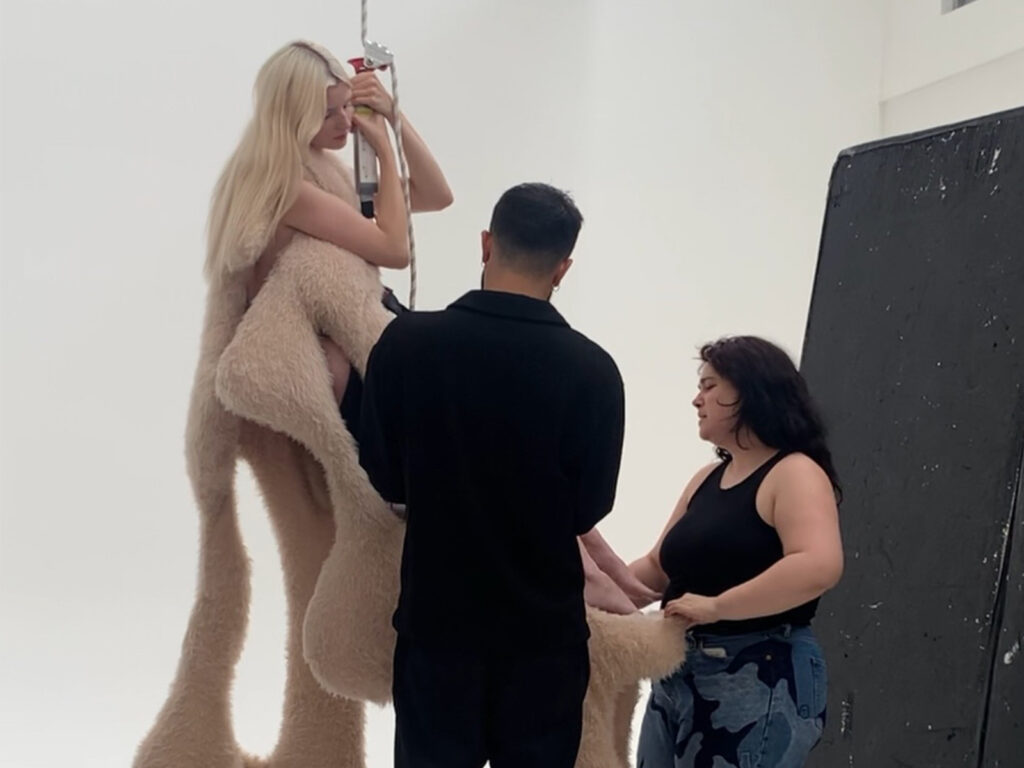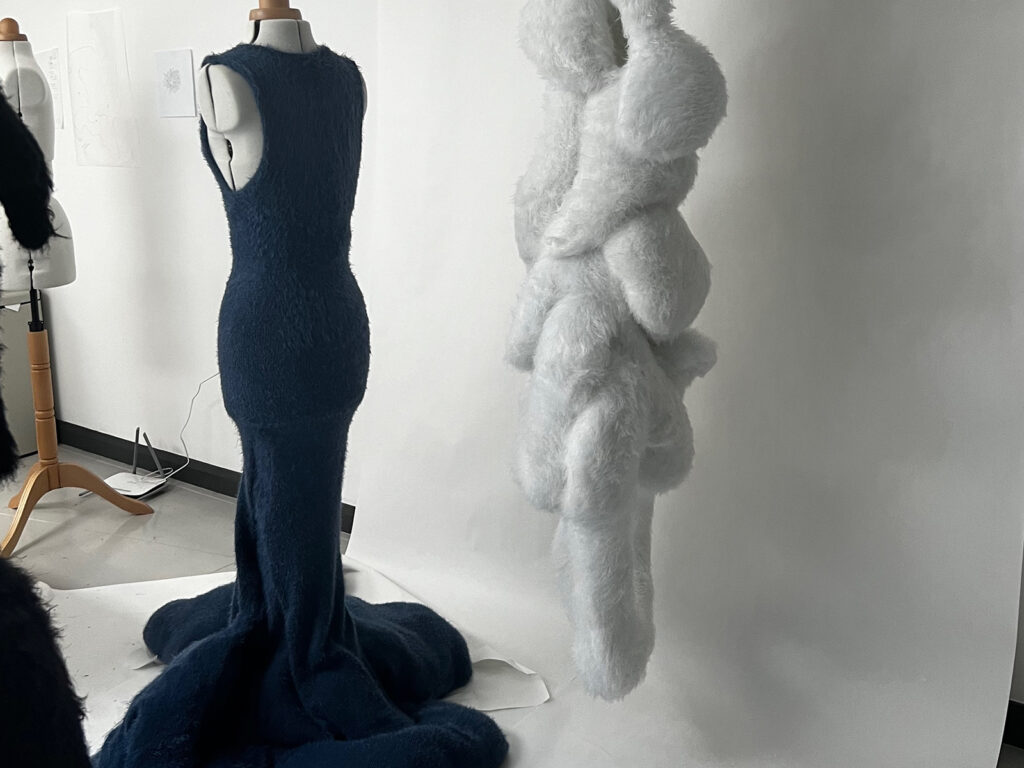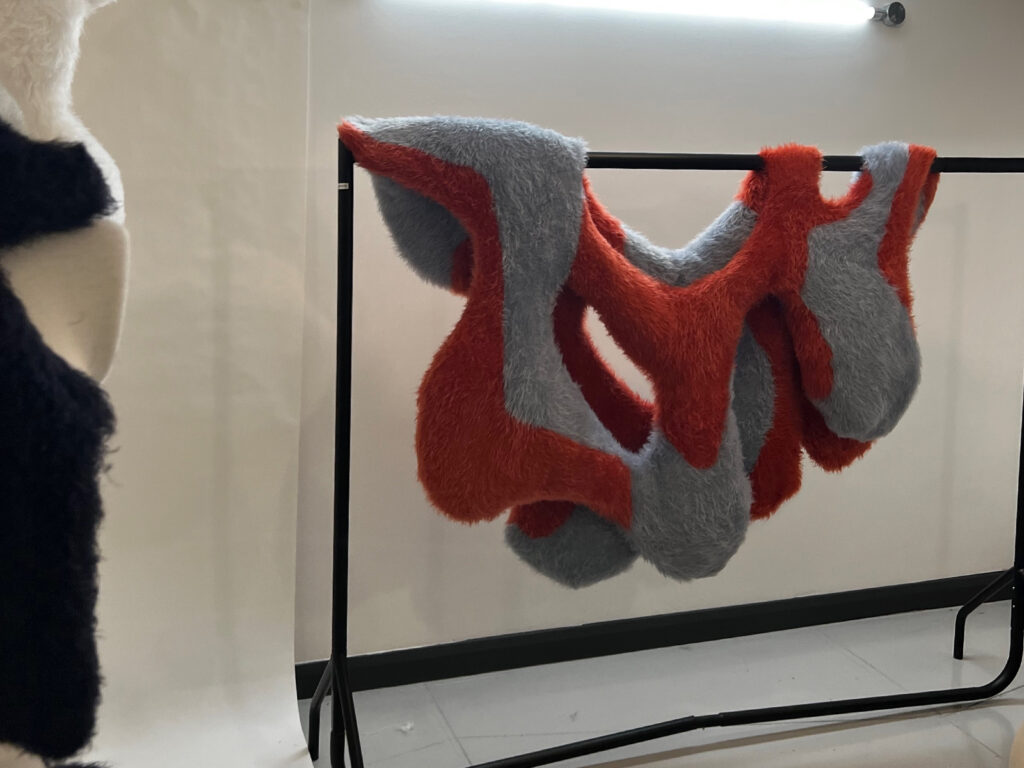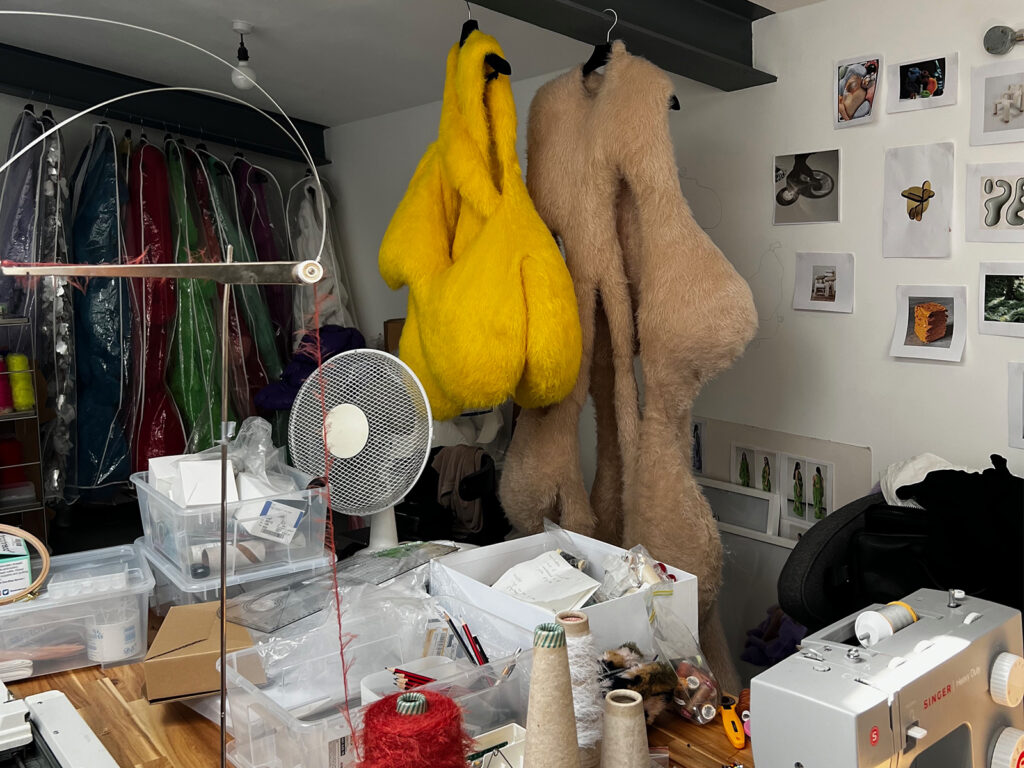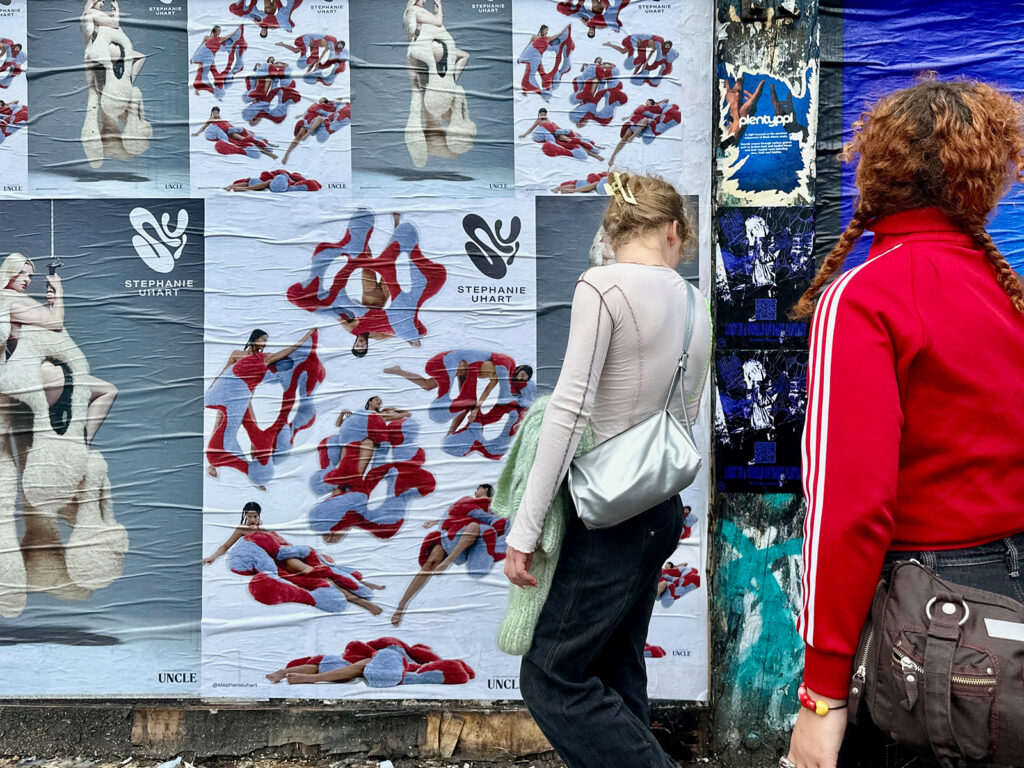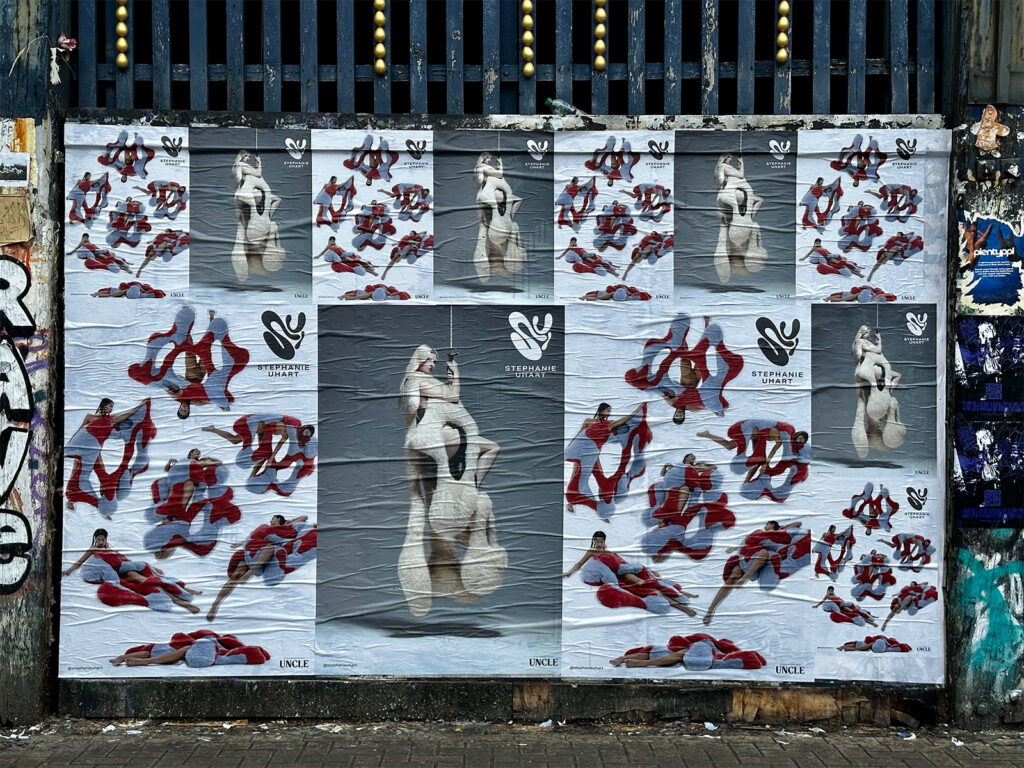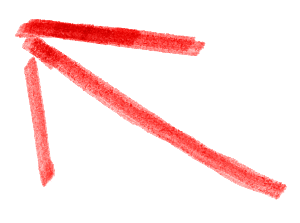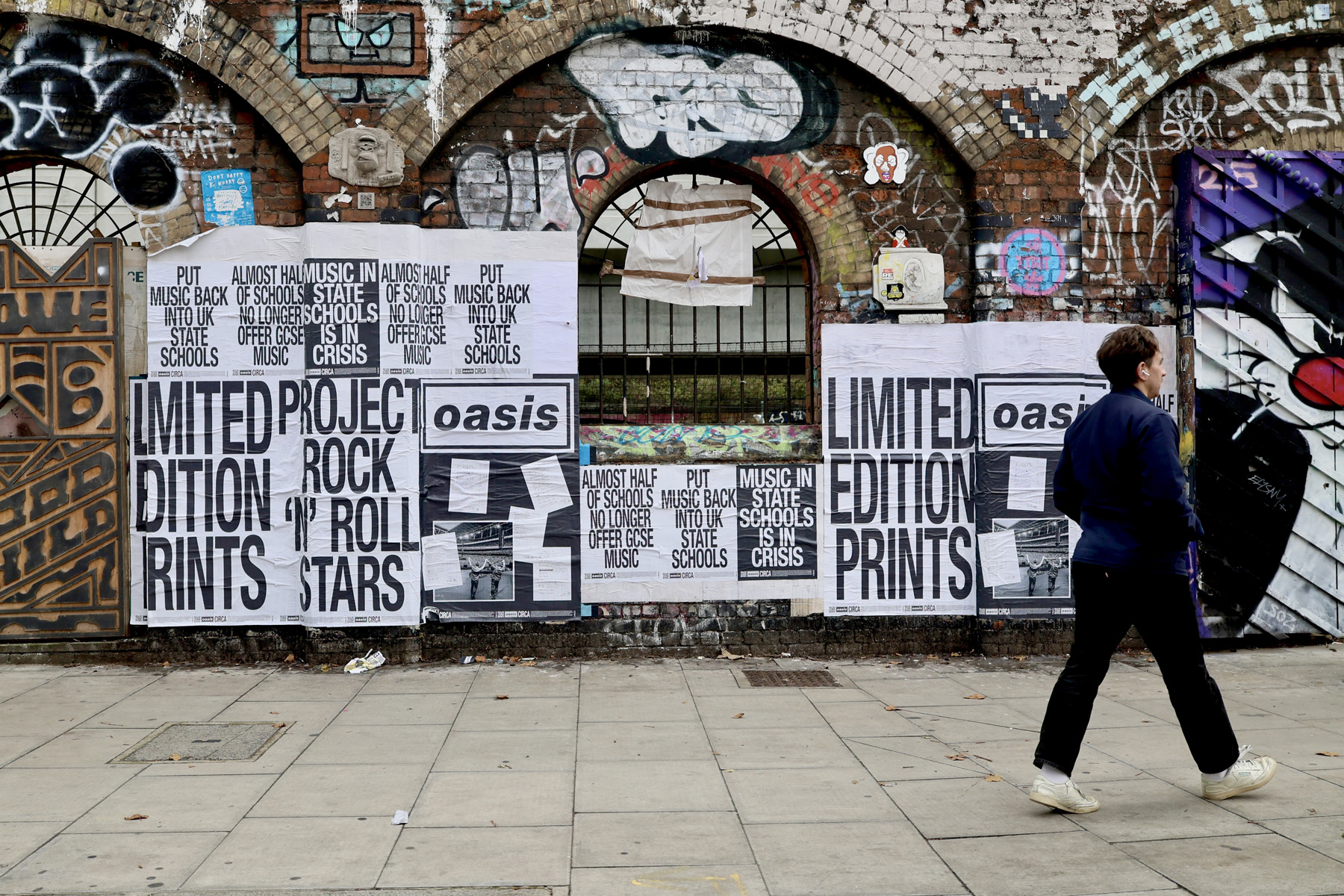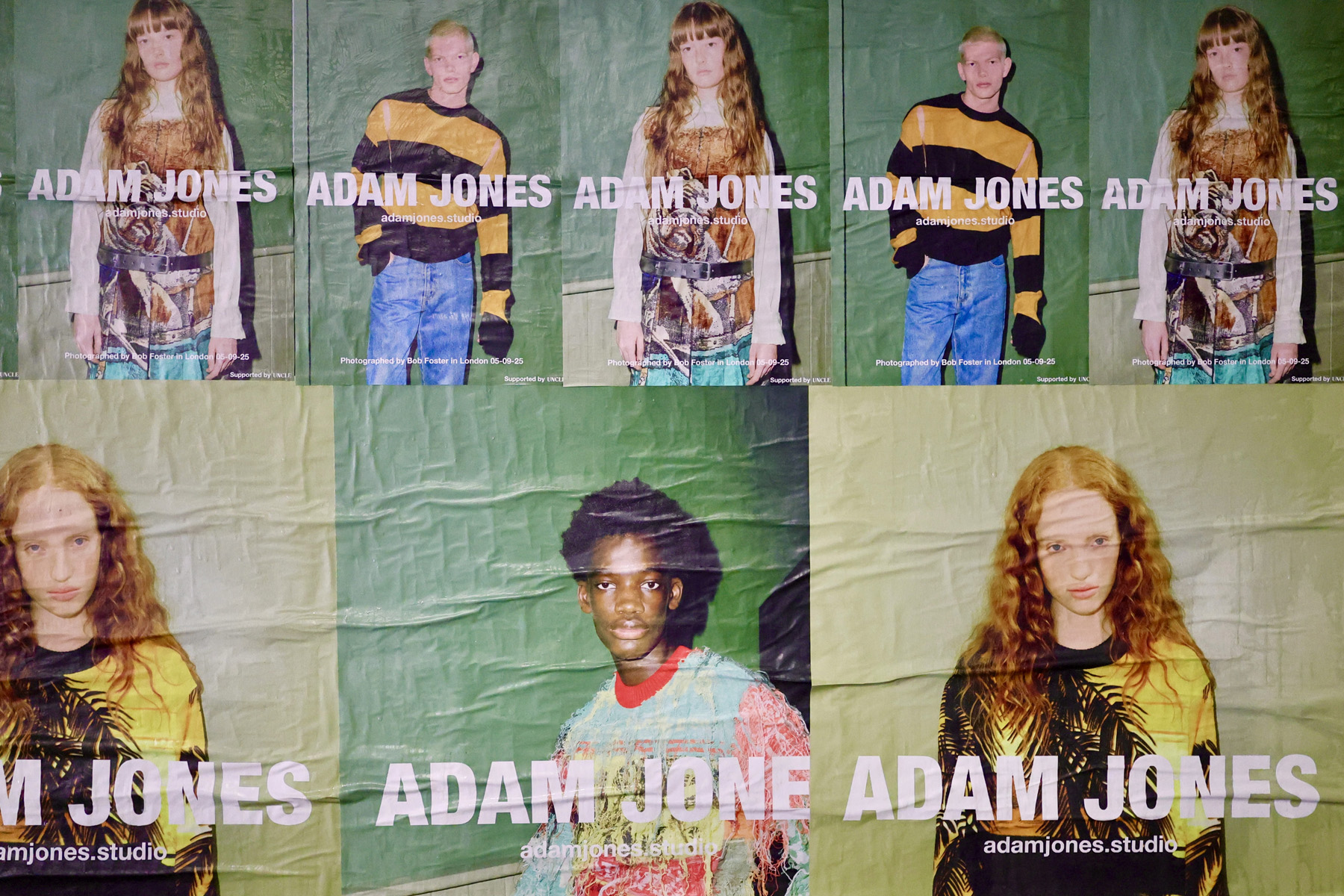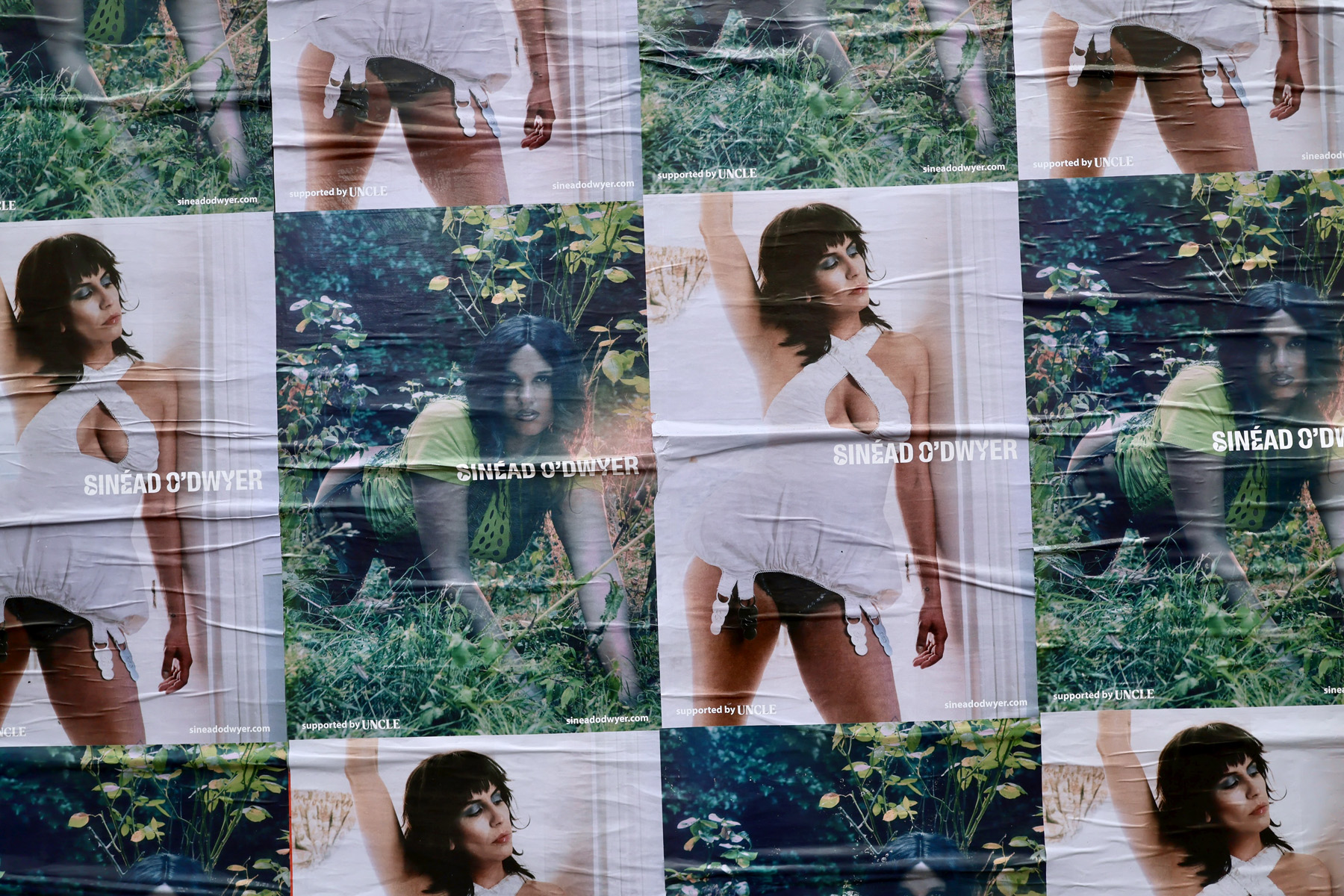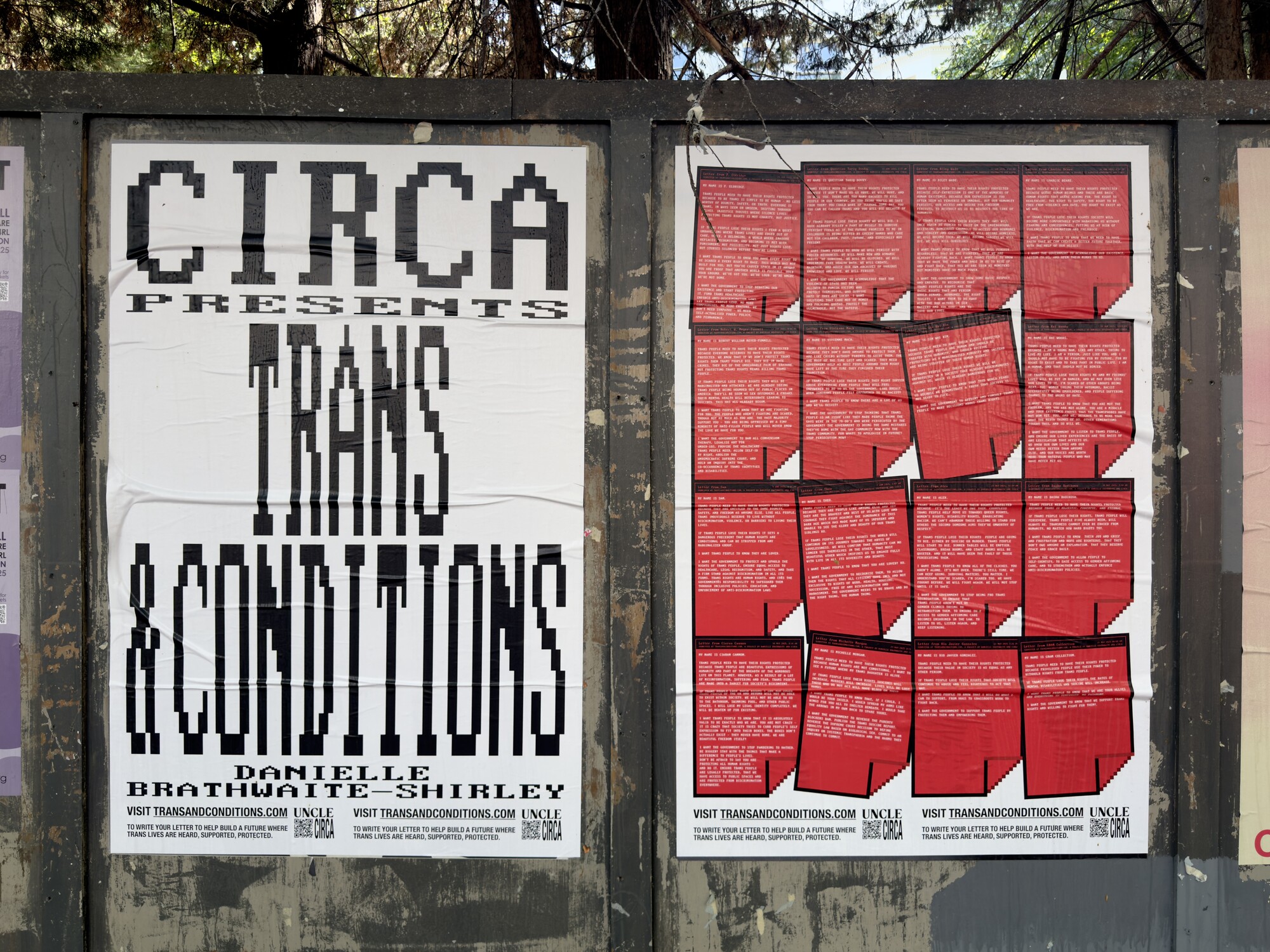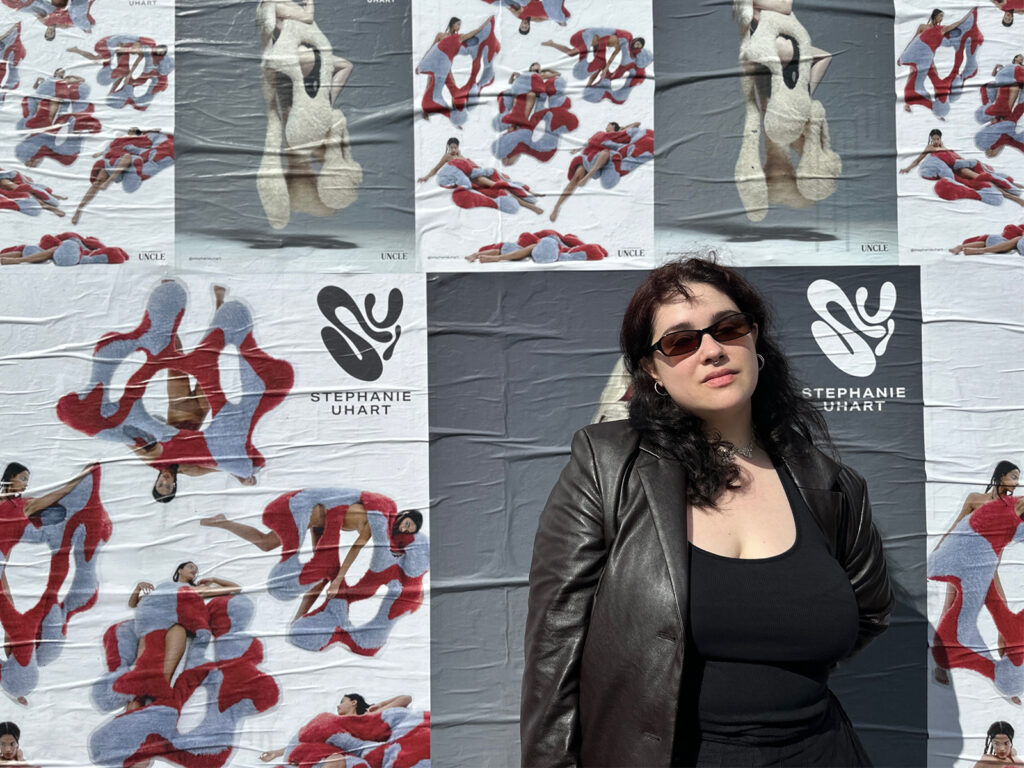
The fluff needing to be fluffed is just one task that goes into one of Stephanie Uhart’s eye-catching designs. The fashion designer’s work has been shared in Vogue, AnOther Magazine and Elle, where the glorious process behind her impressionist garments has recently been shared. During London Fashion Week, Uhart’s work will adorn the walls of the city that she moved to from Chile ten years ago as a student.
Stephanie’s work is unconventional but endearing and so was her journey to this point. Describing herself as an outsider of the fashion industry, the fact that her super-sensory pieces will be flyposted on walls as opposed to being propped up on runways at the latest LFW is quite apt. Her bold, bespoke and yes, fluffy fashioning’s, are not the result of overly planned, meticulously sketched, catwalk-or-bust design. But rather, impulsive improvisation.
Stephanie creates each piece as it comes to her, sometimes not knowing how it will be worn or what the piece will even be when it’s finished. Each item channels a different emotion felt by the designer at that moment, and so can be brushed with anything from the anxieties of scrapping a final year university project with a week to go until the deadline, to the joyous pleasure of unbound creativity and a state of flow.
Her journey into fashion has also been ‘non-linear’. Born and raised in Chile, Uhart grew up surrounded by art, thanks to her parents, who are art dealers. This constant exposure to different art that would come and go, laid the groundwork for her creativity in fashion, although she didn’t always see it that way. Moving to London to study at Central Saint Martins, one of the world’s leading arts and design schools, she quickly realised that she didn’t quite fit the mould of the traditional fashion student. Where others might meticulously plan and execute their designs, Uhart’s approach was far more instinctual.
She found herself more drawn to the artistic side of fashion, a space where she could explore emotions and textures without the constraints of the industry’s expectations. Her graduate collection, created during the height of the pandemic, was a turning point. With the usual pressures of deadlines and fashion shows removed, Uhart was free to experiment and push the boundaries of her creativity. The result was a collection that was deeply personal, a true reflection of her emotional state during those tumultuous times.
This sense of freedom has become a hallmark of her work. Her pieces have been described as ‘wearable sculptures’ and led to attention from the aforementioned staples of the fashion world. But despite these accolades, Uhart remains something of an outsider in the fashion industry, a position she seems to embrace.
Her work doesn’t conform to the traditional fashion narrative, and that’s precisely what makes it so compelling. It’s fitting that her latest collection, Lucid Delusions, will be showcased not on the runways of London Fashion Week, but on the city’s streets. Through UNCLE’s flyposting campaign, her designs will be brought directly to the people, bypassing the exclusive world of fashion shows and instead becoming part of the city’s make-up.
Although fluffier catwalks surely beckon.
CAN YOU START BY INTRODUCING YOURSELF IN YOUR OWN WORDS?
Sure! I’m Stephanie Uhart, a fashion designer originally from Chile, now based in London.
COULD YOU SHARE WITH US THE JOURNEY THAT LED YOU TO BECOME A FASHION DESIGNER?
My journey into fashion wasn’t entirely straightforward, and it’s still something I grapple with today, even in defining myself as a fashion designer. I studied fashion formally, but my experience at university was more on the artsy side of things. I often felt like I didn’t entirely fit into the traditional fashion industry. It’s a space I’m familiar with, but I lean more toward an artistic direction, which complicates how I see myself within the industry.
My actual work in fashion really started during my time at university. While working on my graduate collection during the pandemic.
DO YOU THINK STUDYING AND CREATING YOUR FINAL PROJECT DURING LOCKDOWN HAD AN IMPACT ON THE END RESULT?
Absolutely, I found a kind of creative freedom I hadn’t experienced before. The usual pressure of fashion shows and deadlines wasn’t there because, in the middle of a global crisis, everything was so uncertain. Our teachers were also really worried about us, I think – like, I scrapped my entire project a week before the deadline and my teachers were surprisingly relaxed about it. We were given the freedom to explore without the usual constraints, and for me, that meant really focusing on my emotions and how they could be translated into shapes and textures.
Without the usual distractions and comparisons to my peers, I started to develop a unique process where my emotions became the core of my designs. It was a chance to take risks, to do things differently, and that’s when my work started to come alive in a way that felt true to me. I wasn’t trying to imitate anyone else; I was purely focused on how I felt and how I could express that through my designs.
OTHER THAN YOUR STUDIES, WERE THERE ANY OTHER PIVOTAL MOMENTS THAT HAVE HAD A BIG INFLUENCE ON YOU?
Growing up, I was always surrounded by art. My parents are art dealers, so our home was constantly filled with different pieces that would come and go and I’d get obsessed with this art whilst they were at home. That exposure undoubtedly influenced me, although I didn’t realise it at the time.
Interestingly, I’ve always been drawn to fluffy textures. I remember trying to incorporate that into my work during my BA, but I struggled with finding the right material. It wasn’t until I accidentally discovered that I could brush yarn to create that fluffy texture that things really clicked for me. From that point on, I never looked back.
YOUR DESIGNS ARE NOW KNOWN FOR THEIR UNIQUE TEXTURES AND FORMS. COULD YOU WALK US THROUGH THE PROCESS OF HOW ONE OF YOUR PIECES IS MADE, FROM CONCEPT TO FINAL PRODUCT?
My process is quite intuitive and not very linear, which is why I often struggle to explain it to others in the fashion industry who might expect a more traditional approach. I don’t start with a detailed sketch or a pattern. Instead, I begin with an idea, which often comes from an emotion or a visual reference that has stuck with me.
I like to experiment directly with the materials, which is where the real magic happens for me. For example, when I’m working with yarns, I’ll start playing around with textures, brushing them, twisting them, and seeing how they react. It’s a very hands-on process. I don’t always know what the final piece will look like when I start, and that’s part of the excitement for me.
Sometimes, I’ll have a vague idea, but it usually evolves as I go along. I work directly with the materials, allowing them to guide me. If something doesn’t work, I’ll deconstruct it and start again, which can be frustrating but also rewarding when I finally get it right. The spontaneity and freedom in this approach are essential to my work, and it allows me to create pieces that feel organic and true to the moment I’m in.
IS THE FASHION INDUSTRY CONDUCIVE TO YOUR WORK STYLE?
I’ve had a really rough encounter with the fashion industry because I cannot find the place where I actually fit. There’s a certain expectation of how things should be done — designers are expected to have everything meticulously planned out, from detailed sketches to precise patterns. And to do collections and to do t-shirts. But for me, that approach feels too rigid. My style is more spontaneous, and I need the freedom to improvise as I go along.
I think the industry could benefit from being more open to different ways of working. Not every designer thrives under the same conditions, and there should be room for those of us who approach design more experimentally. Sometimes, the most innovative ideas come from unexpected places, from moments of improvisation rather than strict planning.
I don’t think it’s the type of industry where you can force your work into a certain shape so you can make money. I feel like if I were to force myself to do something for money, then I do something entirely different and keep this as hobby.
THERE’S A SENSE OF WHIMSY AND PLAYFULNESS IN YOUR DESIGNS, PARTICULARLY IN THE BOLD USE OF COLOUR AND TEXTURE. I CAN’T IMAGINE SOMEONE NOT FEELING HAPPY OR AT LEAST HAPPIER IF THEY’RE WEARING YOUR CLOTHES. IS THIS INTENTIONAL, AND WHAT DO YOU HOPE IT BRINGS TO THOSE WHO WEAR YOUR PIECES?
I’m so glad you mentioned that! I want my work to evoke a sense of joy and lightness. Fashion can often be so serious, and I think it’s important to inject some fun into it. The bold colours and exaggerated textures are meant to make a statement, to stand out and be noticed, but also to express different ways of feeling.
I don’t know if I am always achieving this in every piece yet. Some of them are really stressful. Some of them are really peaceful, but I don’t know if I’m actually communicating that or not. But I would like to actually get to a point where I am saying what I want to say with my designs.
I think of my pieces almost as wearable art. They’re not just clothing; they’re an experience. When someone wears one of my designs, I want them to feel empowered, to embrace their individuality, and to have fun with fashion. It’s about creating pieces that resonate on an emotional level, that bring out a sense of happiness and confidence in the wearer.
IF YOU HAD TO PICK ONE, WHAT WOULD BE A HIGHLIGHT OF YOUR JOURNEY IN FASHION SO FAR?
There’s been so many, but I’d have to say the first one that happened was when Adut Akech wore one of my BA pieces for AnOther Magazine. It was a piece I created during my university days, so seeing it being worn and appreciated on such a platform was surreal. They emailed me and I was like, ‘is this real? Is this a joke? This is insane.’
What made it even more special was the fact that they left me a handwritten note to say thank you. They were incredibly kind, and working with them was such a positive experience. I still have copies of the magazine as a keepsake.
IS THERE ONE PIECE OF FEEDBACK OR A REACTION TO YOUR WORK THAT HAS RESONATED WITH YOU STRONGLY?
One thing that really resonates with me is when people describe my work as wearable sculptures rather than just clothing. I love that because it’s exactly how I see my pieces. They’re not just garments; they’re forms of art that can be worn in a million different ways.
It’s fascinating to see how stylists and wearers interpret my designs. I’ve had instances where a stylist sent me three different photos of the same dress, asking if it was three different dresses! I love that versatility—it shows how my pieces can be transformed and adapted to someone else’s vision, almost like they’re becoming a part of someone else’s art. That’s really important to me, to create something that isn’t just confined to one way of being worn but can be interpreted and reinvented by whoever wears it.
NAME ONE PERSON YOU WOULD LOVE TO SEE IN YOUR WORK…
That’s a really hard one. There are a few, but I’ll go with Rosalia. I love her music and how she uses the Spanish language.
AS LONDON FASHION WEEK APPROACHES YOUR COLLAB WITH UNCLE WILL BE HITTING THE STREETS. WHAT CAN WE EXPECT FROM YOUR LATEST COLLECTION THAT’S GOING TO ON THE POSTERING CAMPAIGN? ARE THERE ANY NEW THEMES OR IDEAS YOU’RE EXPLORING?
You know, I’ve actually never done Fashion Week in the traditional sense, so I’m really excited about the timing of this collaboration because it aligns perfectly with the launch of my new collection, Lucid Delusions. This collection feels like an evolution from my previous work, which was more about perception. There’s more depth to Lucid Delusions, and I’ve played around with different shapes and tones. While my past work featured bolder colors, this time, I’ve incorporated some more toned-down hues but with a variety of situations happening within the designs. I’m also experimenting with other materials. There’s a lot of nylon which made for textures similar to like a puffer jacket, so I’ve excited to share how my approach is evolving, too.
HOW LONG HAS THIS COLLECTION BEEN IN THE WORKS FOR?
It took me about two years to complete this collection, and throughout that time, I went through various emotional phases. The theme really captures that journey, from stress and anxiety to moments of happiness.
HOW DOES IT FEEL TO HAVE YOUR WORK NOT JUST ONLINE BUT OUT IN THE PHYSICAL SPACE?
It feels absolutely crazy. It’s something I’ve always associated with huge brands—the idea of having your work out there on posters. To have this chance now is surreal. I don’t know exactly how it’s going to go, but it’s incredibly exciting to see my work in a physical format like this. It also gives me a chance to play more with the photoshoot, to make sure the message really comes through in the image. It’s not just about creating a lookbook; it’s about making something that resonates on a larger scale.
WE’VE BEEN IN THIS SMARTPHONE ERA FOR SO LONG, DOMINATED BY INSTAGRAM AND SMALL SCREENS. HOW DOES IT FEEL TO KNOW YOUR IMAGES ARE GOING TO BE DISPLAYED ON A MUCH BIGGER SCALE?
It’s so crazy, and honestly, the timing couldn’t be better. Personally, I’m trying to spend less time on my phone—I’m really tired of it, and I think a lot of people are feeling the same way. It’s exhausting to do everything for social media. Sometimes, I even question if I’d have a career without Instagram. Would I be doing anything if I didn’t have it? So this is a whole different level of exposure, and it feels like a refreshing change.
HONING IN ON THE CITY WHERE YOUR WORK WILL BE DISPLAYED, WHAT’S SOMETHING YOU LOVE ABOUT LONDON?
I love how diverse and fun London is. It’s a city where you can truly be whoever you want to be without feeling judged. There’s a freedom here that really resonates with me, especially in the fashion scene. My parents live in Paris, and the vibe there is completely different. London, with all its cultures and varied areas, feels like the perfect place for the kind of fashion I create.
WHAT’S THE BIGGEST CHALLENGE OF BEING AN INDEPENDENT DESIGNER?
The hardest part is working on my own most of the time. While I’ve had help from interns and friends, it’s often just me handling everything. It can get really hectic, especially when I have to juggle multiple tasks at once. When something goes wrong, it’s all on me, and that responsibility can be overwhelming.
WHAT’S YOUR FAVOURITE THING ABOUT BEING INDEPENDENT?
I love the freedom to make my own choices in every aspect of my work. Whether it’s designing, casting models, or deciding how to present my work on social media, I get to be creative in my own way. It’s also great to collaborate with friends on different aspects of my brand.
WHY DO YOU THINK FASHION IS IMPORTANT AS AN ART FORM?
I think fashion is important because it’s a form of self-expression that everyone engages with, whether they realise it or not. Even if you just wear a white t-shirt and jeans, that’s still a statement. It’s your way of presenting yourself to the world, and that’s something unique to fashion. You can’t walk around and say, “This is the music I’m listening to,” in the same way you can show who you are with what you wear. Fashion is an art form that you can choose from to express yourself, and it’s powerful because it’s something you wear and carry with you wherever you go. It’s like walking around in a piece of art that you’ve chosen to represent who you are. That’s really powerful to me.

